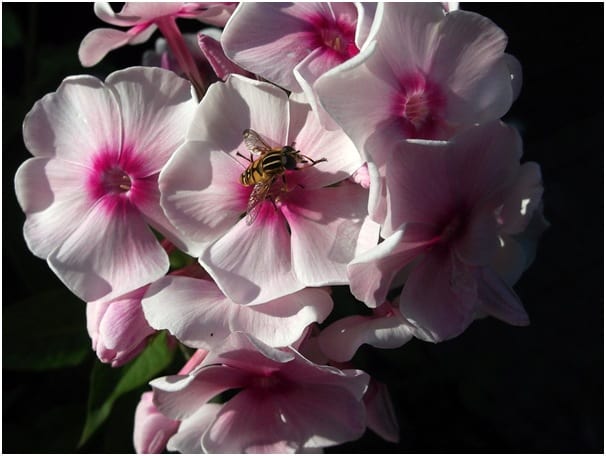With the rise of clean, green, natural and organic beauty, more and more people are making the switch. It’s only natural (get it?) after realising the harm most traditional products do to our skin and bodies!
It can get overwhelming, though, to choose from the massive offering of natural skin care brands and try to understand the best way to transition.
What do all those labels mean? Why are natural products better? Should I get rid of all the old stuff right this minute?
Let’s dig deeper and talk about everything you need to know before switching to natural skin care.
Going natural
What does it actually mean when someone says, “you should go natural”?
The phrase, in a nutshell, means you’re not using any skin care products containing toxic ingredients that are harmful to our bodies and the environment. It also means you’re choosing cleaner products made from natural ingredients that are much more beneficial to the skin.
It’s a healthy way of protecting and nourishing your beauty. It’s also safer as natural ingredients are less common to cause allergies and various side effects than synthetic ones.
Benefits of choosing natural skin care
It’s safer. While some natural ingredients can cause irritation, the chances of experiencing an allergic reaction and suffering long term consequences of such synthetic ingredients like parabens, silicone, fragrances or phthalates are very low or non-existent. These toxic additives may cause everything from rashes to build up to severe illnesses like cancer. No, thank you!
It gives you healthy, glowing skin. Whether you have normal, sensitive, dry or oily and acne-prone skin, natural skin care products take care of it gently and without causing irritation. While traditional products may give immediate visual improvements, these don’t last long and can even backfire, making dry skin even drier and oily skin overproducing oils and…even oilier.
Natural skin care products are the opposite. They are gentle, full of natural vitamins, oils, antioxidants and other powerful ingredients that nourish and beautify the skin without harsh side effects.
It’s effective. Often people worry that natural skin care isn’t as potent or effective. The truth is that it’s as powerful (or even more powerful) than the traditional products because the products contain highly concentrated ingredients.
How to make the switch
Understand what you need.
It might sound strange, but many people don’t really know their skin type, so make sure you do before switching to new and natural products. Observe your skin and really understand it.
Once you know what your skin needs, it will be easier to choose the right products. Remember that different brands create different products, so ask for samples and see which “dry skin moisturiser” really works for your skin and which one doesn’t.
Ask for or buy testers.
To reiterate, we strongly recommend asking the brands for testers or ordering their smaller packaging kits first to make sure you don’t spend your money on something that might not work for you.
Step by step
Let your skin and body detox and adjust to new and natural products, don’t just toss everything out at once! This is also a more budget-friendly way of restocking your beauty bag.
Don’t forget that more often than not, your skin might react to the change, so wean yourself off gradually. To avoid or minimise breakouts, dryness or redness, instead of stopping using that old moisturiser at once, use it every other day, then twice a week etc.
Switch one product at a time and watch what happens. Over time, your skin will adjust and adapt, and you’ll be able to switch out all your products!
Keep it simple
One of the key principles of clean and natural beauty is minimalism. Do you really need a 10 step daily routine?
As we’ve already established, natural beauty products are potent, so you don’t need to keep layering to get results.
Choose your base products – face wash, serum, oil, moisturiser – and stick to them.
Understand the labels
Unfortunately, there’s still a lot of greenwashing in the beauty industry and just because something says “green” might not mean much.
That’s why you need to read the labels carefully. As a bare minimum, your products shouldn’t have any parabens, silicone, fragrances, phthalates or similar toxic ingredients.
Want to know what specific terms mean? Here’s a quick guide.
Organic. Look for certified organic products as it means that all the ingredients are derived from organic sources. Australian Certified Organic (ACO) and COSMOS Organic products are non-toxic, free of parabens and sulphates, vegan, and cruelty-free.
Green. It’s an unregulated term which means it’s up to the producer to be honest about whether the products actually limit environmental effects. Generally, this should mean that the products are made locally, use recycled packaging, are vegan, cruelty-free and are made using sustainable energy sources.
Vegan. Vegan products do not contain any animal by-products, e.g. honey. Usually, they are also cruelty-free.
Cruelty-free. These products weren’t tested on animals, but they can still be non-vegan, like, e.g. a balm with beeswax.
Fair-trade. This signifies products made from ethically sourced ingredients that don’t harm the environment and communities.
In the end, our suggestion is to find brands that are open and honest about their products. Choosing smaller local businesses like SCOUT Organic Active Beauty is often the way to go as by default, they are more protective of their integrity and usually start these businesses looking to make a change!
Written by Health Guest Contributor Domenica Francis.


